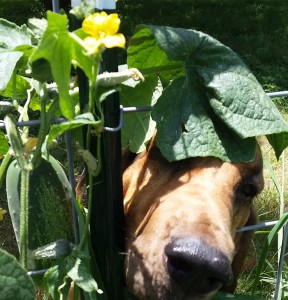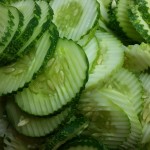Cucumbers, or Cucumis sativus, are a great selection for home gardening and come in two types: slicing and pickling. Cucumbers can seem to take up a lot of space due to their 4 to 6 foot vines, but if grown vertically on sturdy panels they take up less space and can prove to be one of the most productive small garden crops.
The first step is to choose what type of cucumber you want to grow. Slicing types can grow fruit up to 8 inches long and 1 inch wide when mature. They are most often used in salads, veggie trays, and can be preserved as bread and butter pickles. For traditional pickles, both sliced and whole, it is best to grow a pickling cucumber that is much smaller, up to 4 inches, when mature. If space is limited it is best to plant pickling cucumber if you can’t plant both.

Much like for tomatoes, cages can be beneficial to cucumbers. Cages allow the vines to grow up easier than some other form of trellis or fence. Plants can be planted closer together, approximately 3 feet by 3 feet apart, because the vertical growth uses less space. You may need to assist your plants with attaching themselves to the cages by guiding the young vines through the openings a couple times.There are many benefits to growing these vegetables vertically such as less disease susceptibility, more space for other crops, and an increase in air circulation.
Cucumbers do not like cool temperatures, so when direct seeding wait until the soil temperature is above 60 degrees and there is no chance of frost. Your cucumber seeds should be planted 1-1.5” deep in hills 3 to 4 feet apart (when not using cages), with 2-3 plants per hill. Doing this will increase the likely hood of a successful plant and extra plants can be removed after emergence. Cucumbers must be grown in full sunlight and should not be planted near trees because tree roots will steal their nutrients and water. Fertilizer and plenty of water are needed for cucumbers to grow properly. If it does not rain in a given week, the plants should be soaked well.
Pests and diseases can prove a problem to cucumbers, the most common of which are aphids, cucumber beetles, and leaf miners. As a last resort, one may use appropriate insecticide but be sure to spray in the afternoon so as not to disturb the honey bee pollination.

Recommended Varieties for Texas:
Slicing: Cucumis sativus ‘Sweet Slice’, Cucumis sativus ‘Sweet Success’
Pickling: Cucumis sativus ‘Calypso’, Cucumis sativus ‘Liberty’